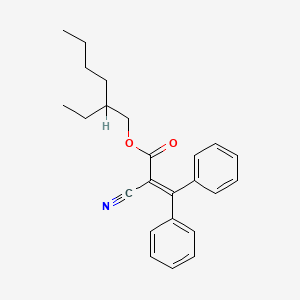
Octocrylene是较为新型的防晒成分,属于油溶性化学防晒剂,可吸收紫外线中波段在250~360的UVA和UVB,在防晒霜中经常搭配其他防晒剂一起使用,能达到较高的SPF防晒指数,不过Octocrylene暴露在阳光下会释放出氧自由基。
長期可能導致老化,須考慮使用
"Perhaps the best approach to stabilizing avobenzone is to incorporate octocrylene (EU) in the formulation to help prevent the formation of the triplet state. Octocrylene is also a globally approved sunscreen (although some evidence suggests octocrylene may itself be a photo-sensitizer, causing indirect DNA damage). The key L’Oreal patents (in the United States) for stabilization of avobenzone using octocrylene expired in late 2014 and are now freely available."
Source: https://knowledge.ulprospector.com/2232/pcc-avobenzone-globally-approved-uva-absorber/
An oil-soluble chemical sunscreen agent that protects skin in the UVB and somewhat in the UVA II range with a peak absorption of 304 nm. Its protection is not strong enough on its own but it is quite photostable (loses 10% of SPF protection in 95 mins) and is often used to stabilize other photo-unstable UV-filters, for example, Avobenzone. It is also often used to improve the water resistance of the products.
Octocrylene's safety profile is generally quite good, though a review study in Contact Dermatitis reports an "increasing number of patients with photo contact allergy to octocrylene." Mainly adults with ketoprofen-sensitivity and children with sensitive skin are affected, so if you have a small kid, it is probably better to use octocrylene-free sunscreens.
https://incidecoder.com/ingredients/octocrylene
Not coral reefs and marine life friendly! Belongs to the HEL list of ingredients to avoid while purchasing SPF to protect the marine environment:
The HEL LIST includes:
Any form of microplastic sphere or beads.
Any nanoparticles like zinc oxide or titanium dioxide.
Oxybenzone
Octinoxate
4-methylbenzylidene camphor
Octocrylene
Para-aminobenzoic acid (PABA)
Methyl Paraben
Ethyl Paraben
Propyl Paraben
Butyl Paraben
Benzyl Paraben
Triclosan
(Source: https://haereticus-lab.org/protect-land-sea-certification-3/)
Octocrylene readily absorbs through the skin at levels about 14 times the FDA cutoff for systemic exposure (Hayden 2005, Matta 2020), but the agency suggested there is insufficient data to determine whether it can be classified as safe and effective (FDA 2019).
Studies have found that octocrylene causes relatively high rates of skin allergies (Bryden 2006). It has been linked to aquatic toxicity, with the potential to harm coral health (Stein 2019), and it is often contaminated with the known carcinogen benzophenone. According to a recent study, its levels can increase when it is stored (Downs 2021). The European Commission recently concluded that although there was some evidence of octocrylene’s endocrine-disrupting potential, current use concentrations up to 10 percent were considered safe.
https://www.ewg.org/sunscreen/report/the-trouble-with-sunscreen-chemicals/
